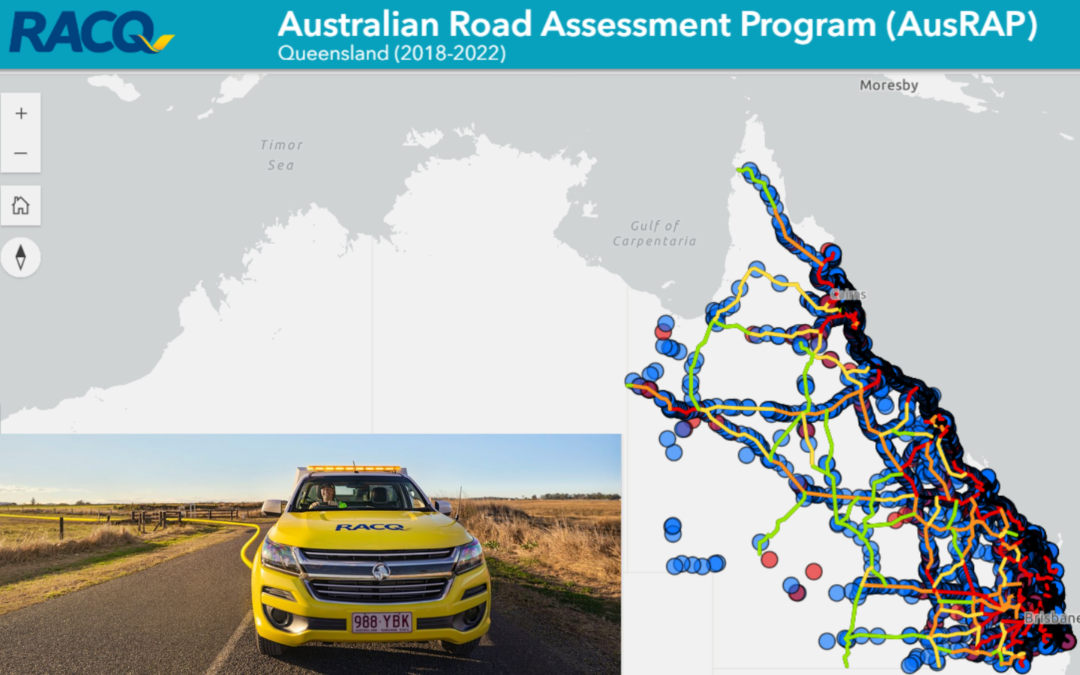The Royal Automobile Club of Queensland (RACQ) in Australia proactively performs annual risk mapping to understand the crash risk on 21,500km of the State’s regional high-speed road network.
The results are shared in an innovative data hub that maps risk, star ratings and crashes.
RACQ’s Traffic and Safety Engineering Manager Gregory Miszkowycz said, “RACQ advocates for mass action road safety programmes that will reduce fatalities by at least 50%, and serious injuries by at least 30% in Queensland, by 2031.
“Annual risk mapping is an important part of our work to understand the safety of State road infrastructure and performance track vital improvements,” he said.
As well as identification of high-crash ‘Black Links’ where mass action road safety treatments could be most effective and economical to deliver the largest Fatal and Serious Injury (FSI) crash reductions, network-level performance tracking of crashes are also measured against a baseline 2014-18 dataset, to better understand how the road network is tracking towards meeting crash reduction targets set under National and State Road Safety Strategies by 2030 and 2031, respectively.
RACQ supports over 1.7 million members and recently invited all Queenslanders to vote on what the Club should prioritise in its advocacy in the lead-up to the October State elections.
RACQ’s General Manager of Advocacy Joshua Cooney said, “Queenslanders are ranking the Bruce Highway as their number one concern in RACQ’s Top 10 Priorities list in the lead up to the polls.
“The Bruce Highway is the backbone of Queensland’s economic activity, but almost half of it (45.2%) is rated just 2-stars out of five for road infrastructure safety. In desperate need of repairs and upgrades, we need all political parties to lock in a 10-year state and federal funding commitment to reverse the piecemeal approach to Bruce Highway project delivery.
“On average 29 people lose their life on the Bruce each year and more than 360 suffer serious injuries from crashes. In addition, almost half of the Bruce Highway link sections (11 of the 23) totalling 670 kilometres are considered a high-crash ‘Black Link’ under our AusRAP crash Risk Mapping analysis,” Mr Cooney said.
RACQ’s completion of annual risk mapping and open publication of results is helping advocacy efforts for safer roads, as well as informing investment prioritisation and decision-making for safer roads in the State.
For more information
- See RACQ’s innovative data hub for Queensland that maps risk, star ratings and crashes here.
- Read more about the Club’s work to improve state road infrastructure safety as part of the AusRAP programme here.
- See more Australian and State road safety data and explore how Queensland and Australia are tracking towards road safety targets by visiting the Australian Automobile Association (AAA) Road Safety Dashboard here.


















